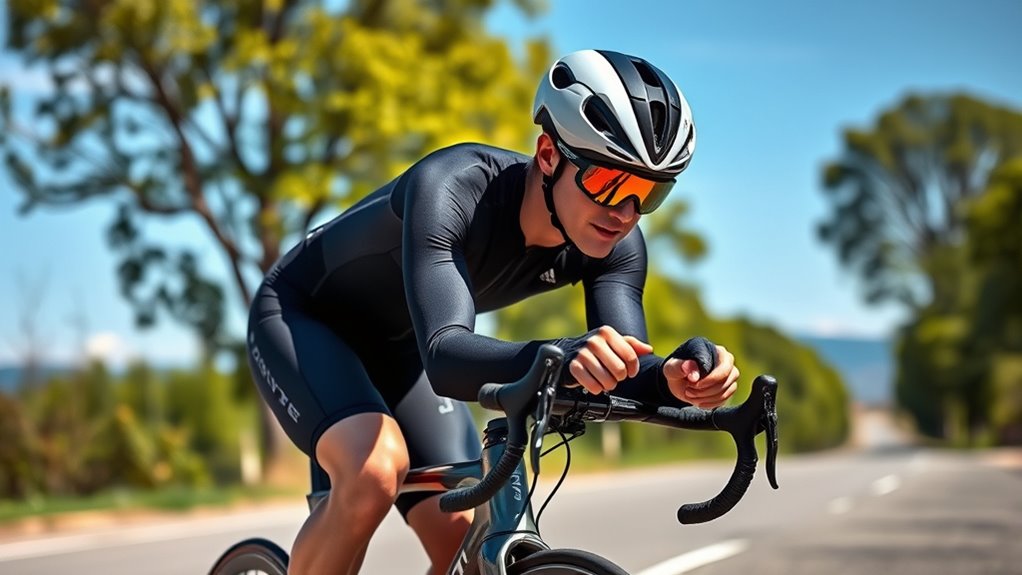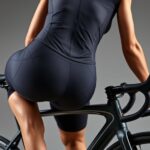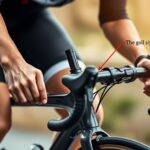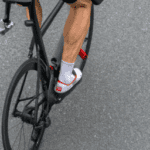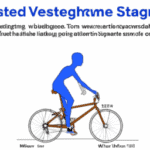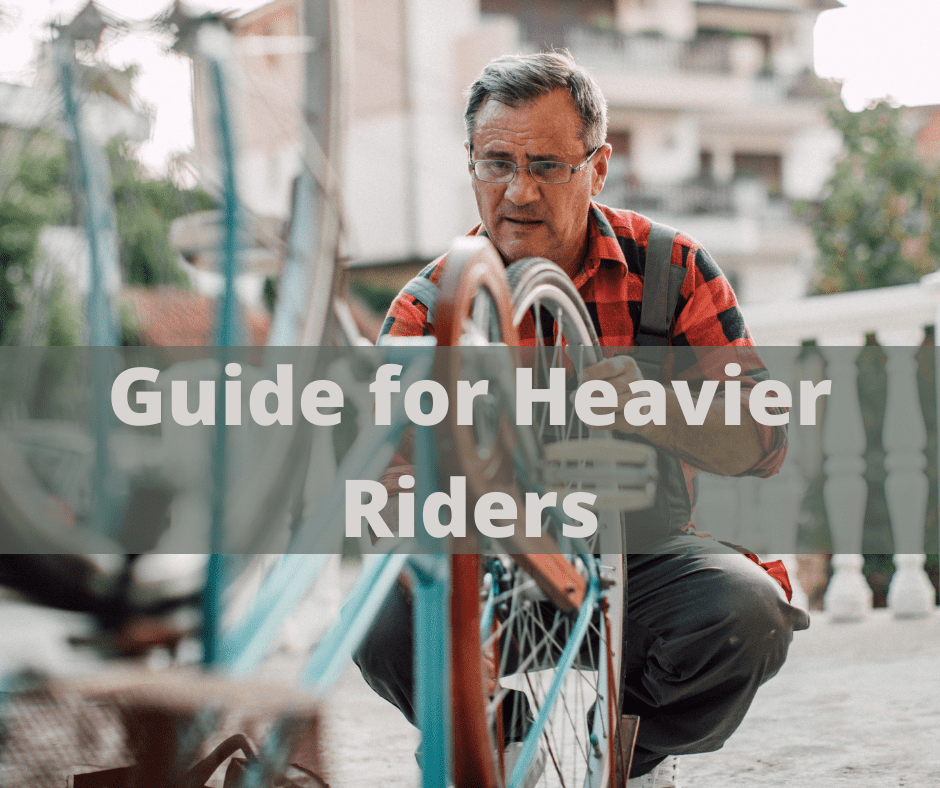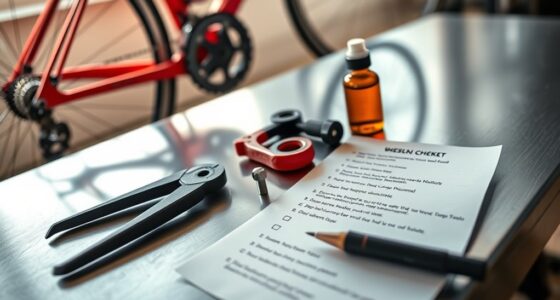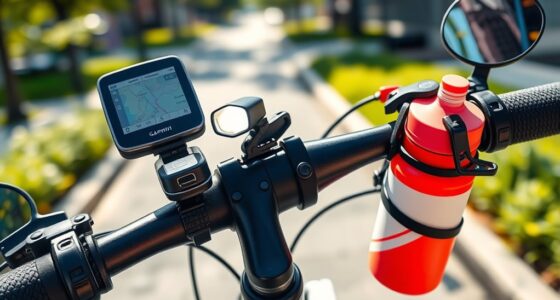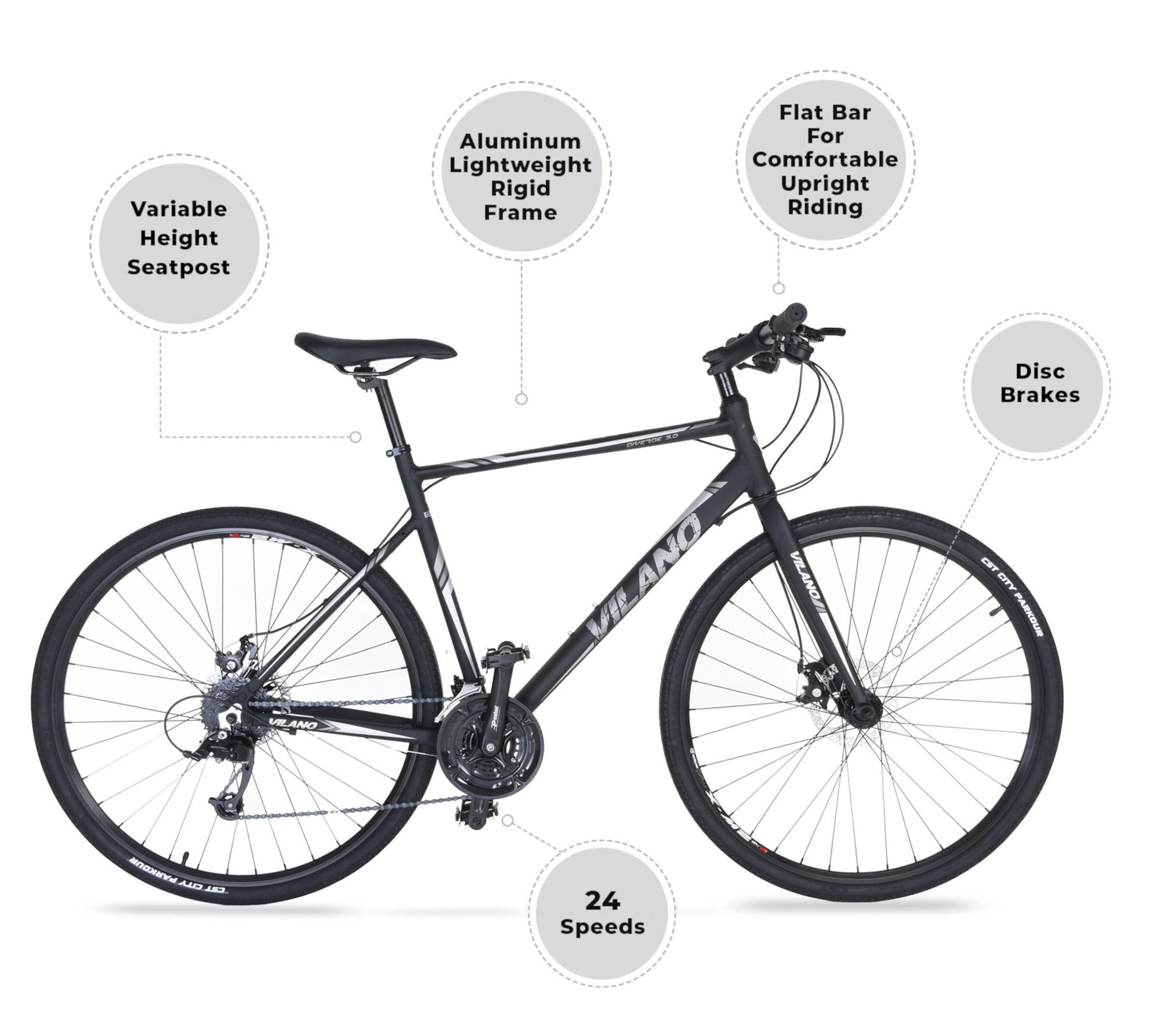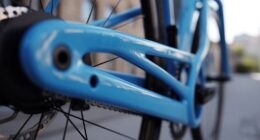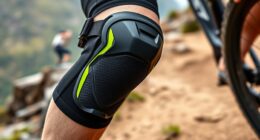To set up an aero road position without pain, start with a thorough bike fit by adjusting saddle height so your knees have a slight bend and your hips stay level. Next, fine-tune handlebar reach and drop to avoid neck and shoulder strain, and make certain your posture is aerodynamic yet comfortable. Incorporate flexibility and core exercises to support your setup, and regularly reassess during rides. If you stay attentive, you’ll discover more tips to keep your position sustainable and pain-free.
Key Takeaways
- Gradually adjust saddle and handlebar positions to allow your body to adapt comfortably over time.
- Incorporate targeted stretching and flexibility exercises for hips, shoulders, and lower back before and after rides.
- Ensure proper bike fit by consulting a professional to optimize saddle height, fore-aft, and handlebar reach.
- Use ergonomic accessories like padded gloves and handlebar tape to reduce pressure and numbness.
- Regularly reassess and fine-tune your position during rides to prevent discomfort and maintain a pain-free aero posture.
Assessing Your Current Bike Fit and Flexibility
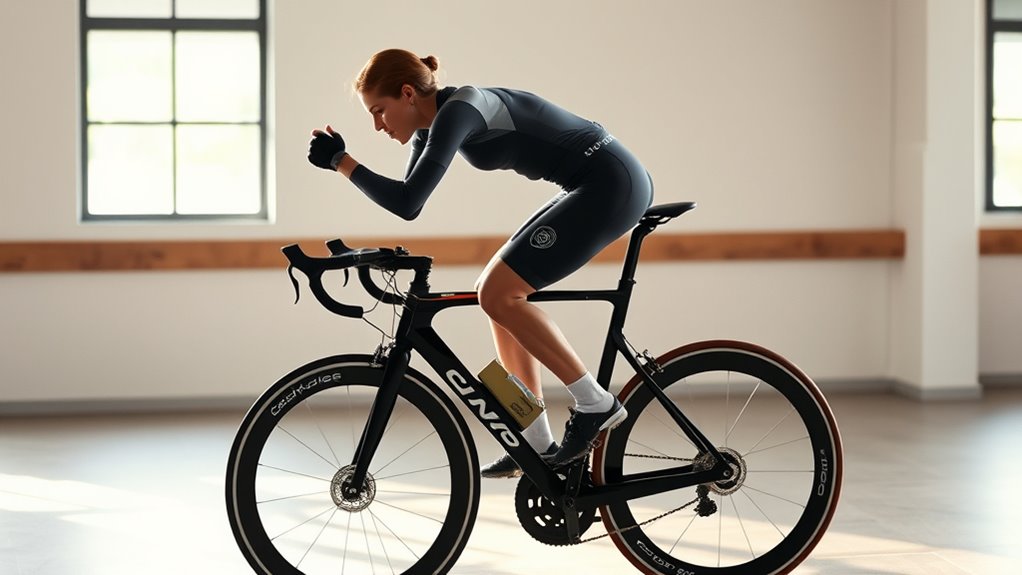
Before making any adjustments to your aero road position, it’s essential to evaluate your current bike fit and flexibility. Start with a thorough bike fit to identify any existing issues that could cause discomfort or pain. A proper bike fit ensures your body aligns correctly with the bike, reducing strain during rides. Conduct a flexibility assessment to determine how well your muscles and joints move through their ranges of motion. Tight hips, hamstrings, or lower back muscles can impact your ability to adopt an aero position comfortably. Take note of any tightness or pain areas, as these insights will guide necessary stretches or adjustments. Addressing your bike fit and flexibility early helps you avoid injury and makes subsequent position tweaks more effective and sustainable. Recognizing the importance of body awareness can further improve your comfort and performance during rides. Incorporating dynamic stretching routines can enhance your flexibility and prepare your muscles for riding. Additionally, understanding how muscle imbalances affect your posture can help prevent discomfort when maintaining an aero position. Incorporating ergonomic considerations into your setup can optimize comfort and efficiency over long distances.
Adjusting Saddle Height and Position for Comfort
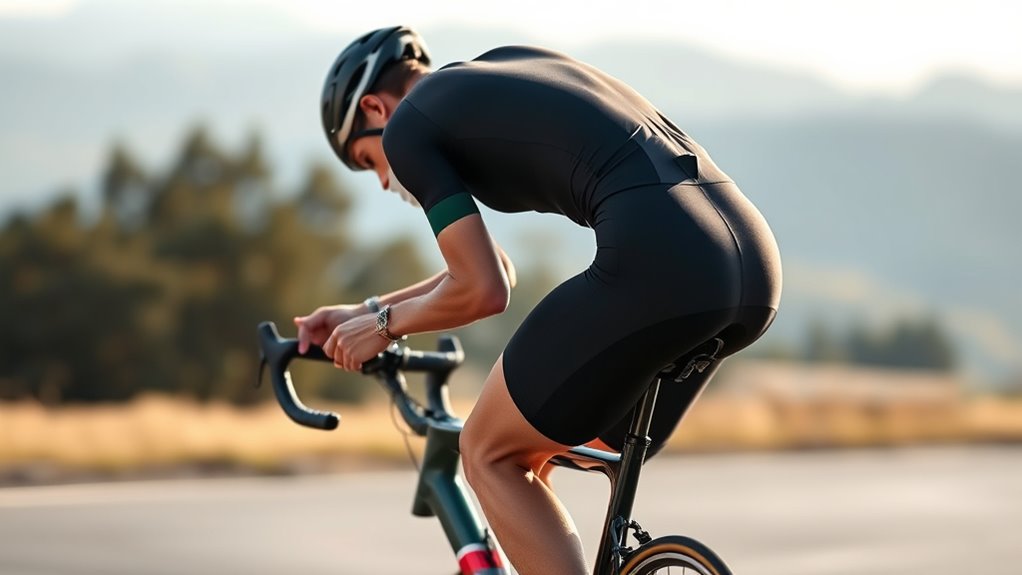
Getting your saddle height and position right is essential for riding comfortably and efficiently. Proper saddle height guarantees your knee is slightly bent at the bottom of each pedal stroke, reducing strain and maximizing power. To fine-tune your setup:
Proper saddle height and position enhance comfort, efficiency, and power on every ride.
- Adjust your saddle height to match your cycling shoes and ensure proper cleat alignment, preventing hot spots or knee pain.
- Shift the saddle forward or back to optimize your reach and keep your hips stable during pedaling.
- Verify your saddle tilt is level or slightly downward, avoiding unnecessary pressure on your lower back or pelvis.
- Ensuring the saddle is appropriately positioned can also help prevent discomfort and promote better support and comfort during rides.
- Additionally, incorporating self adjusting saddle mechanisms can simplify the process of maintaining optimal saddle position over time.
- Remember that different vehicle tuning modifications, such as suspension or aerodynamic adjustments, can also influence overall riding comfort and performance.
Proper Handlebar Reach and Drop for Reduced Strain
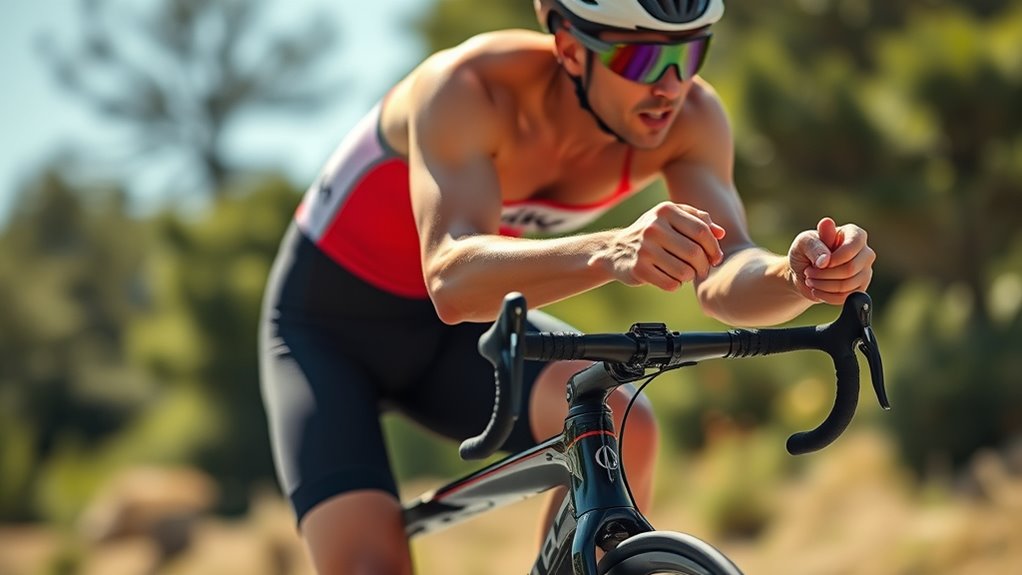
Ensuring your handlebar reach and drop are correctly set can substantially reduce strain on your neck, shoulders, and lower back during rides. Start by adjusting the handlebar height so your arms are slightly bent at the elbows, maintaining a comfortable shoulder angle. A handlebar that’s too low increases drop and forces you into an aggressive position, causing unnecessary shoulder and neck tension. Conversely, a handlebar that’s too high may compromise your aerodynamics. Find a balance where your shoulder angle remains relaxed, and your reach feels natural without overstretching. Proper handlebar reach prevents unnecessary strain, improves control, and helps sustain your aero position longer. Remember, small adjustments can make a big difference in comfort and efficiency on your ride. Regularly checking your setup can also help you avoid injury risk caused by improper positioning, and staying aware of ergonomic principles ensures an optimal riding posture. Additionally, understanding how Gold IRA investments work can inspire you to think about strategic planning for your cycling investments and equipment upgrades. Incorporating proper fit techniques can further enhance your comfort and performance during long rides.
Fine-Tuning Your Aerodynamic Posture for Comfort and Efficiency
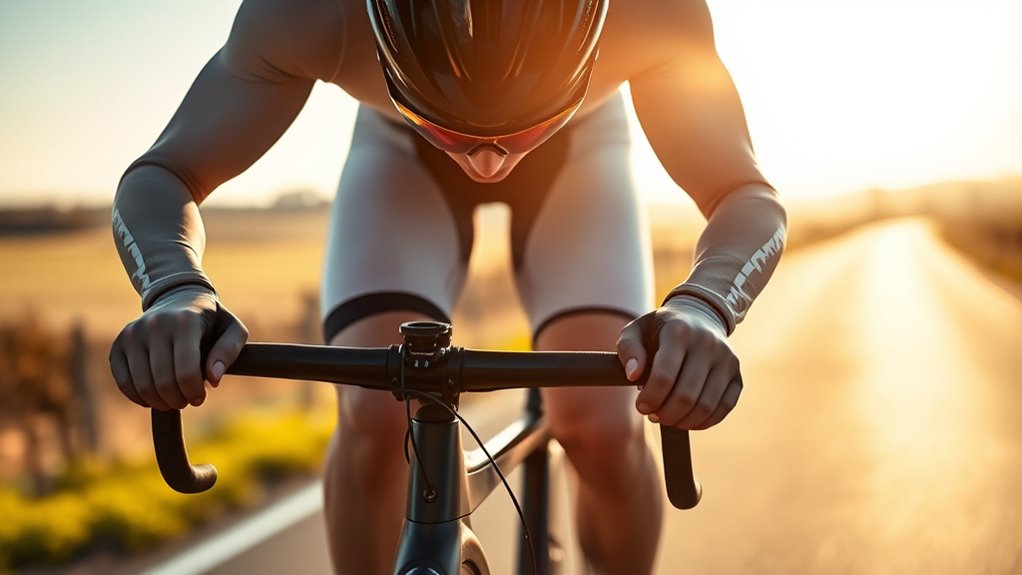
To optimize your aerodynamic posture for both comfort and efficiency, focus on making small, deliberate adjustments that align your body with your bike’s geometry. Start by fine-tuning your aero helmet adjustments to reduce wind resistance and improve visibility. Headphone compatibility can be a useful tool in ensuring that your helmet and accessories don’t interfere with your fit. Next, guarantee your clothing aerodynamics are optimized—tight, smooth fabrics minimize drag and prevent chafing. Pay attention to your arm and torso positioning; subtle shifts can considerably boost comfort without sacrificing speed. Check your handlebar height and tilt, making minor tweaks for a more natural reach. Additionally, understanding AI’s role in safety can help you identify potential issues early by analyzing your riding data. Incorporating passive voice detection into your editing process can help ensure your instructions remain clear and direct. Regularly reviewing your riding metrics can also reveal areas for further posture optimization to enhance both comfort and performance. Ultimately, regularly reassess your position during rides, adjusting as needed to maintain comfort and efficiency. Remember, small adjustments compound, helping you ride faster with less pain, all while staying comfortable in your aero setup.
Incorporating Flexibility and Strengthening Exercises to Support Your Position
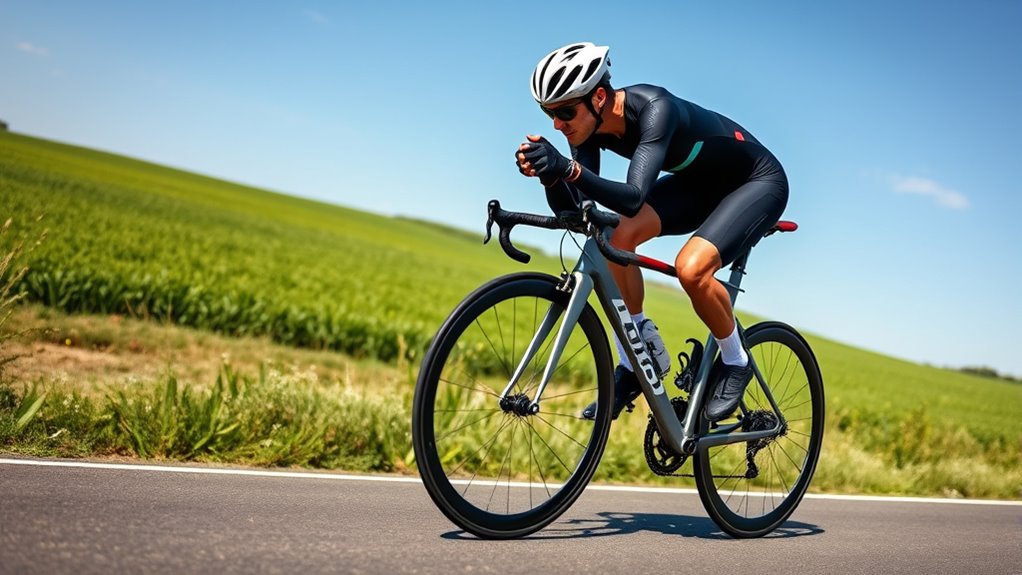
Incorporating flexibility and strengthening exercises into your routine can considerably support your aerodynamic position and reduce discomfort during rides. Focus on core stability exercises, like planks and bridges, to strengthen your core muscles, helping you maintain a more efficient and comfortable posture. Improving flexibility through dynamic stretches for your hips, shoulders, and hamstrings allows for greater range of motion, easing tension in key areas. Additionally, practicing breathing techniques enhances your lung capacity and relaxes your muscles, which can alleviate strain in sustained aero positions. Regularly engaging in proper training methods can further optimize your performance and comfort on the bike. Exploring different bike fitting techniques can also help you understand how equipment impacts overall ride comfort and efficiency. Incorporating mindfulness practices can improve your emotional resilience, allowing you to stay relaxed and focused during long rides. Consistently integrating these exercises helps build a resilient body that adapts to your riding posture, reducing pain and fatigue. Prioritize a balanced approach that combines flexibility, core stability, and breathing to optimize your aero position and enjoy longer, pain-free rides.
Conclusion
By carefully evaluating your fit, making precise adjustments, and strengthening your muscles, you set yourself up for a pain-free aero road position. Remember, finding the right balance is like walking a tightrope—you want to stay steady without losing your footing. Keep listening to your body, tweak as needed, and stay committed to the process. With patience and persistence, you’ll ride comfortably and confidently, turning your bike into an extension of your own body.
